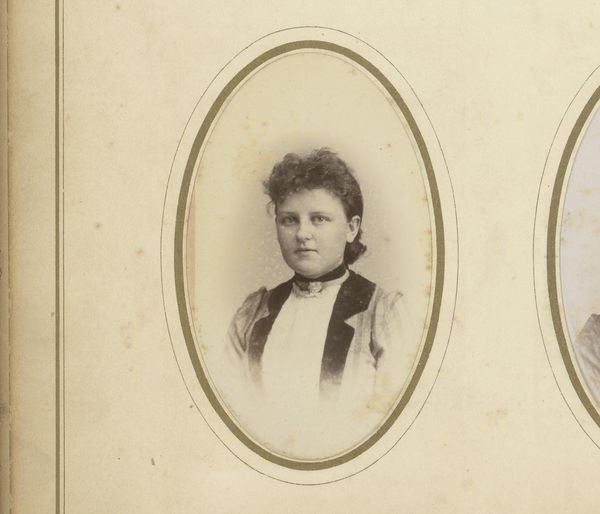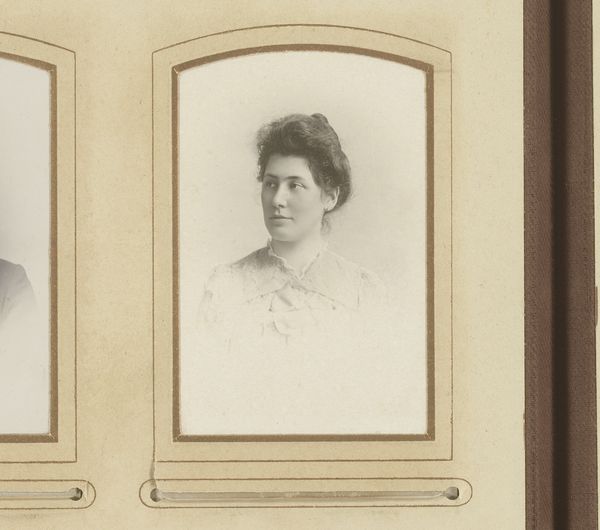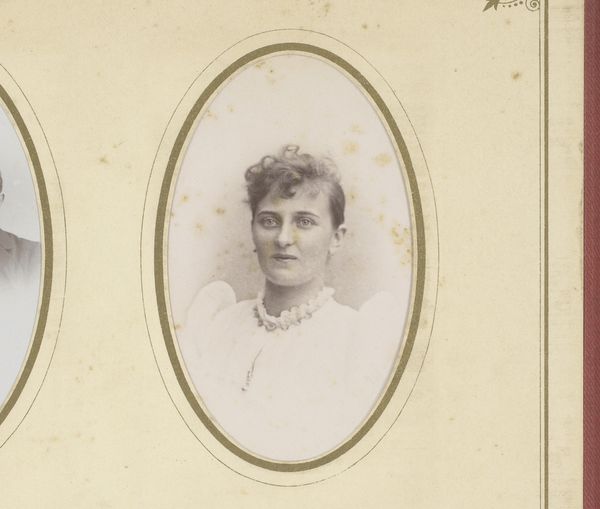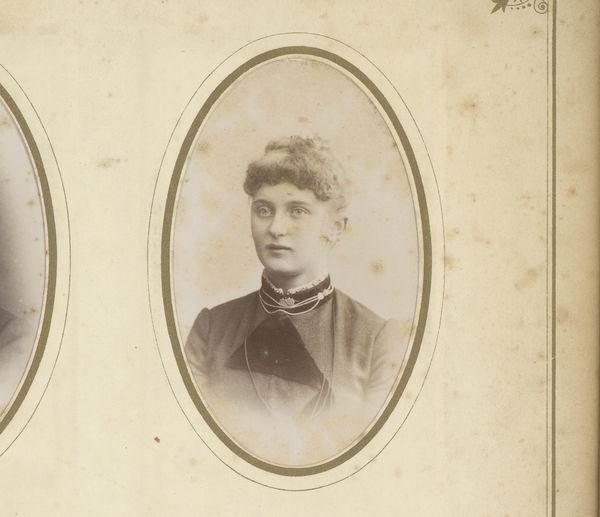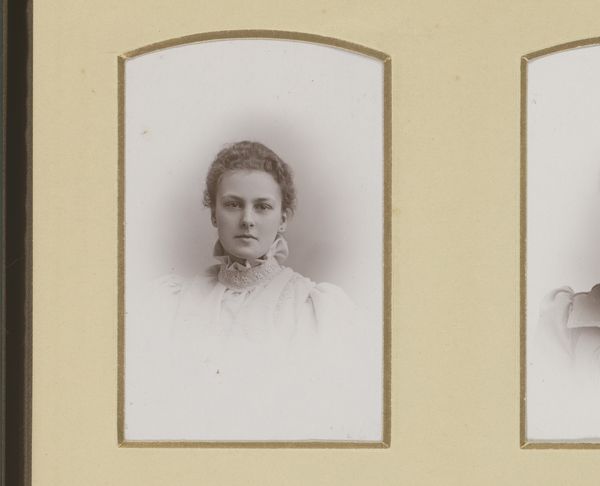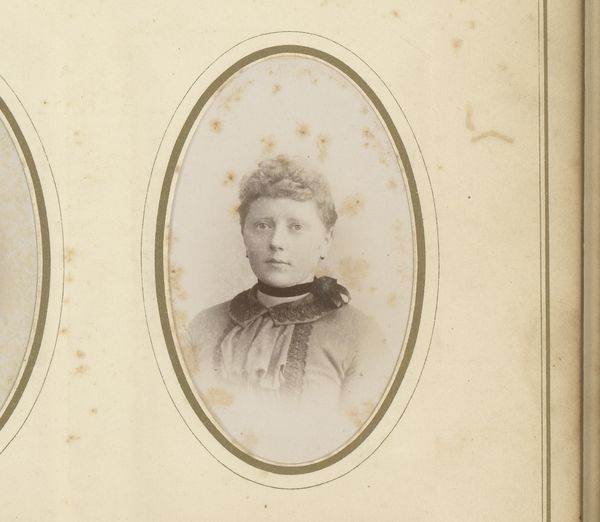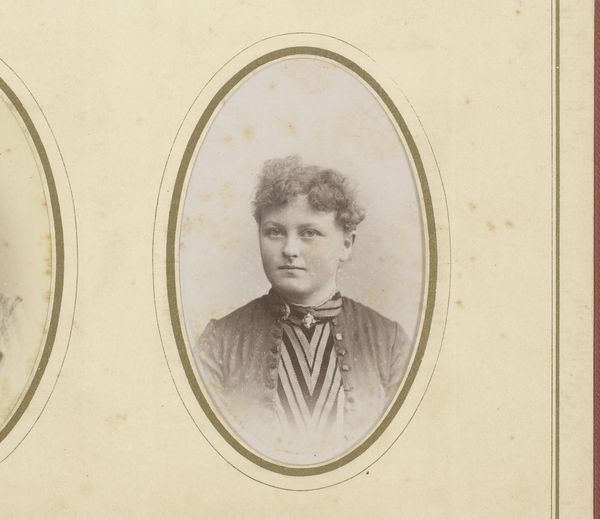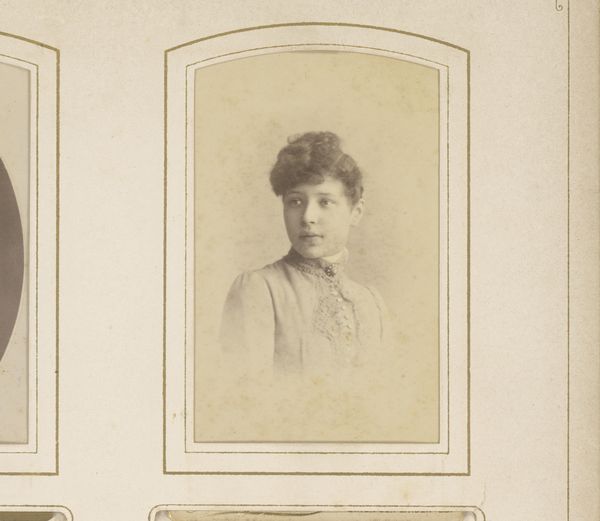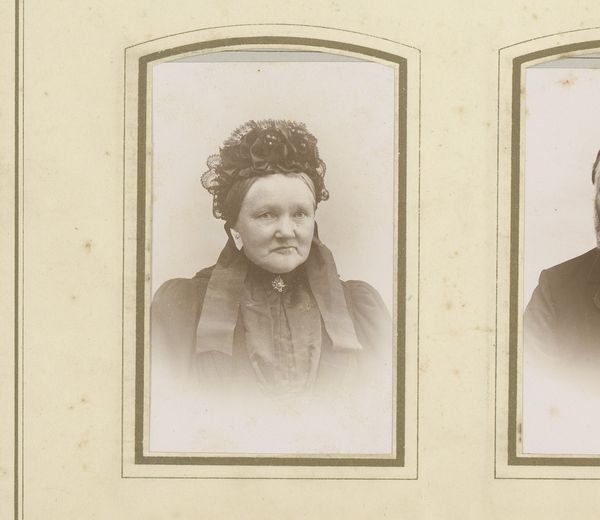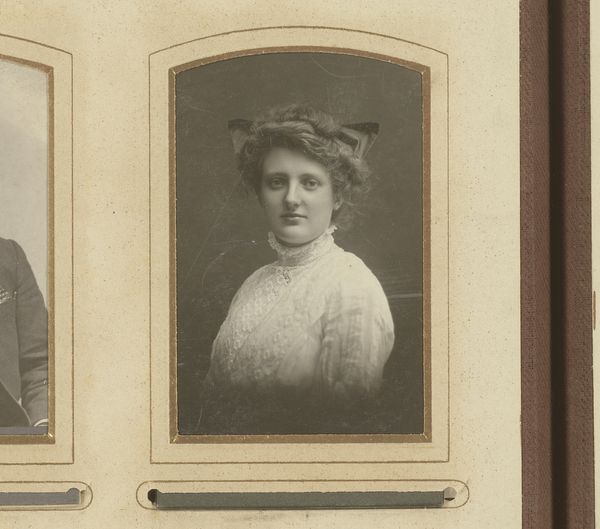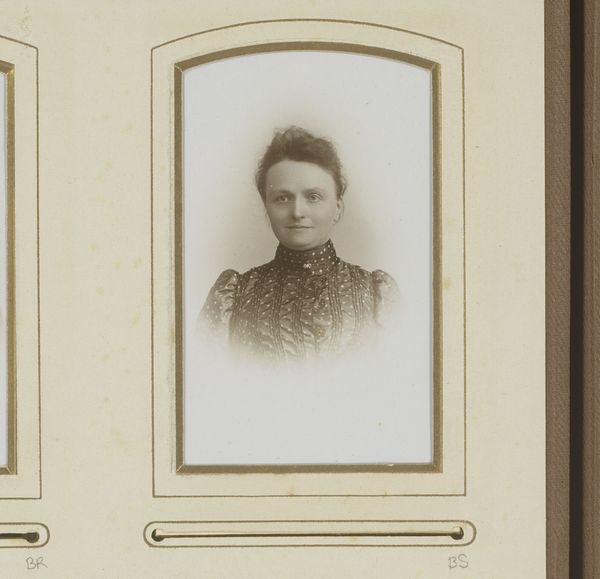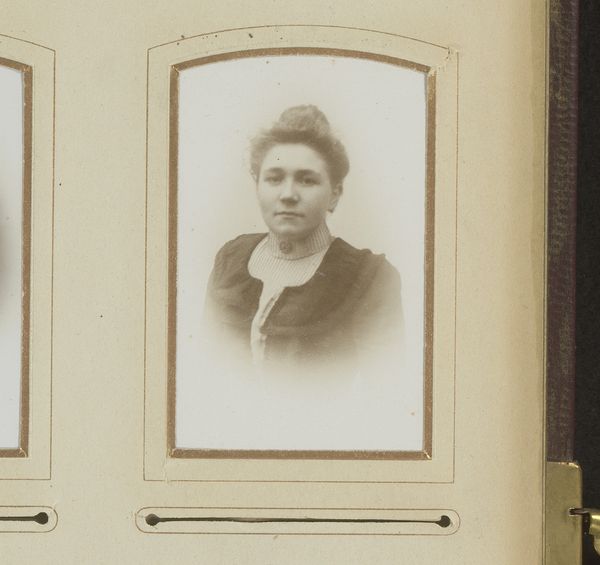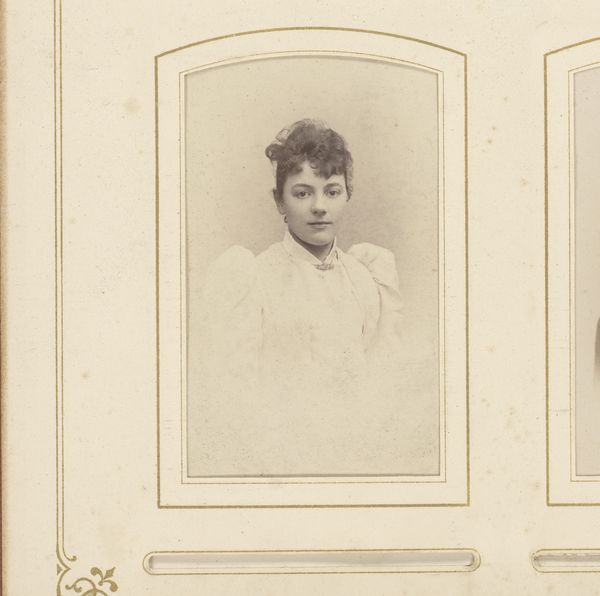
photography
#
portrait
#
16_19th-century
#
charcoal drawing
#
photography
#
historical photography
#
portrait reference
#
19th century
#
realism
Dimensions: height 87 mm, width 53 mm
Copyright: Rijks Museum: Open Domain
Curator: Here we have "Portret van een vrouw," a striking portrait believed to have been taken between 1894 and 1898. The artist, Reinier Uges, captured a realism in this photograph that begs us to consider the historical moment. Editor: Immediately, I’m struck by the composition: the tight framing emphasizes her gaze. It feels direct and almost challenging. The tones are soft, almost dreamlike despite the apparent realism you mentioned. Curator: Right, photography in the late 19th century wasn't simply about pointing and shooting. Think about the labor and materials: the cost of photographic equipment and chemicals, the training required to operate the camera, develop the plates, and make prints. Photography at this time was a complicated process. Editor: Precisely, and it reflects in the final product. Consider how the frame further isolates the sitter, it reinforces a certain emotional detachment. The subtle gradations of light on her face give a hint of vulnerability, an emotional undercurrent, wouldn't you say? Curator: I'm compelled to consider how women entered into public life around this time. Photography created more demand for affordable portraiture for the burgeoning middle classes. It raises the question, how does a sitter understand her identity through such mediums and how does such visibility impact gender expectations and labor divisions in society? Editor: Yes, her dress with its delicate details certainly speaks to that emergent bourgeois culture. There’s an austerity, even within the embellishments, and her simple adornments tell us as much about social standing as they do about personal expression. Note also the composition which centralizes her—powerful for its time. Curator: Absolutely, it reminds us that an artwork's meaning isn't inherent, it is dependent on social and historical contexts in the era of mass production and consumption. We might ask, is this photograph intended as a statement of individual expression or social aspirations within a specific labor structure and the evolution of class? Editor: So, whether it is the light, framing, or historical details, we begin to notice something intriguing and subtle each time. It allows viewers to ponder not only what is shown, but the cultural structures that give it context and visual tension. Curator: Indeed.
Comments
No comments
Be the first to comment and join the conversation on the ultimate creative platform.
